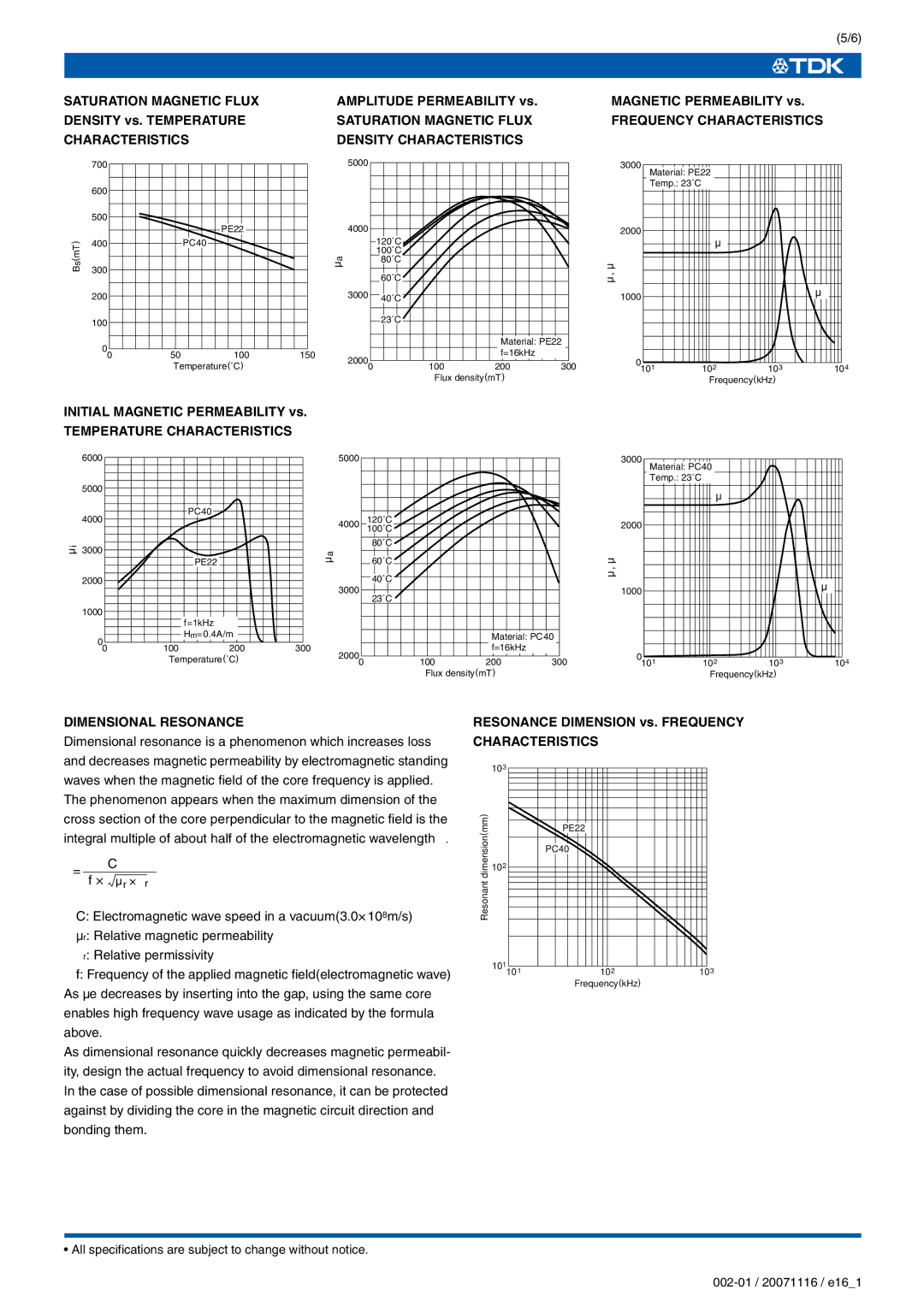EE320x250x20 specifications
The TDK EE320x250x20 is a state-of-the-art electromagnetic component widely recognized for its high reliability and performance in various applications. This product is part of TDK's extensive range of EE cores, which are designed specifically for power transformers, inductors, and energy storage devices. With dimensions of 320mm x 250mm x 20mm, this component provides a robust solution for demanding electrical environments.One of the main features of the EE320x250x20 is its exceptional magnetic permeability. This characteristic allows it to efficiently transfer magnetic fields, making it ideal for applications where power loss needs to be minimized. The design incorporates advanced magnetic materials, which offer a combination of high saturation flux density and low core losses. This results in enhanced energy efficiency, particularly significant in compact, high-performance power supplies.
The EE320x250x20 utilizes innovative technologies that contribute to its superior performance. TDK's proprietary core materials are engineered to minimize eddy current losses, which is crucial for maintaining optimal thermal management in electronic systems. This facet is essential in high-frequency applications, where traditional core materials may exhibit significant losses due to overheating. Consequently, the EE320x250x20 allows for a more stable operation in conditions where thermal control is critical.
In terms of characteristics, the EE320x250x20 boasts a standardized design that ensures compatibility with various windings and assembly processes. This feature simplifies the integration into existing systems, facilitating ease of use for manufacturers and engineers alike. Additionally, the component is available in various versions to suit specific voltage and current requirements, which further enhances its versatility across different fields, including automotive, telecommunications, and renewable energy systems.
Furthermore, the EE320x250x20 core exhibits a robust construction, providing exceptional mechanical strength. This durability not only extends the component's lifespan but also ensures reliable operation even in challenging environments. TDK's commitment to quality assurance means that each core undergoes rigorous testing to meet international standards, reinforcing the product’s reputation as a dependable choice for professionals in the industry.
In conclusion, the TDK EE320x250x20 is an exemplary magnetic core that combines advanced technology, outstanding efficiency, and robust construction. Its design caters to the growing demands of modern electronic applications, making it an indispensable component for engineers and designers aiming for optimal performance in their products.

